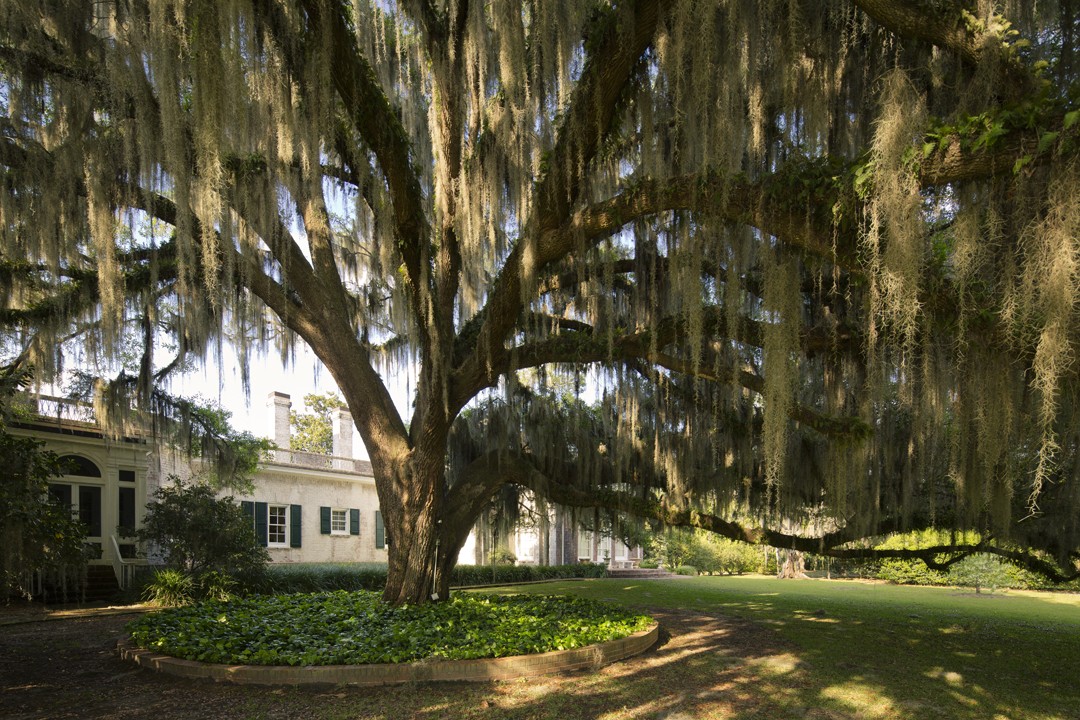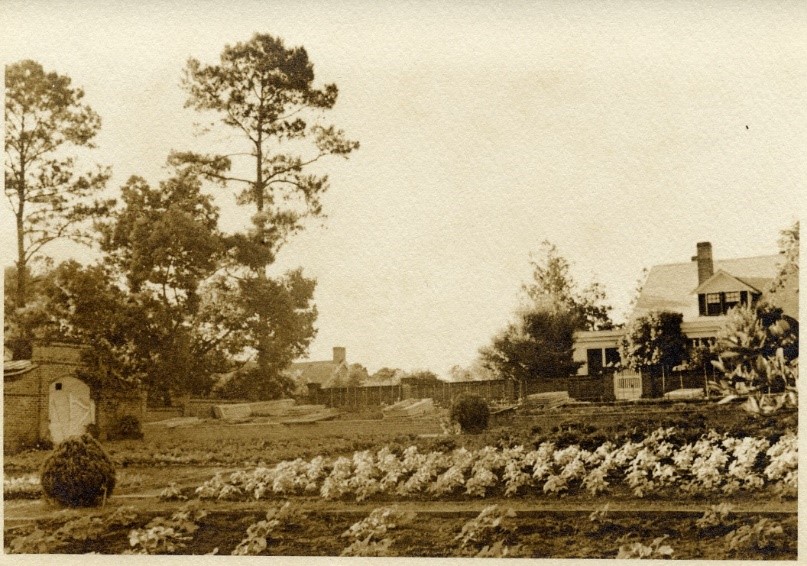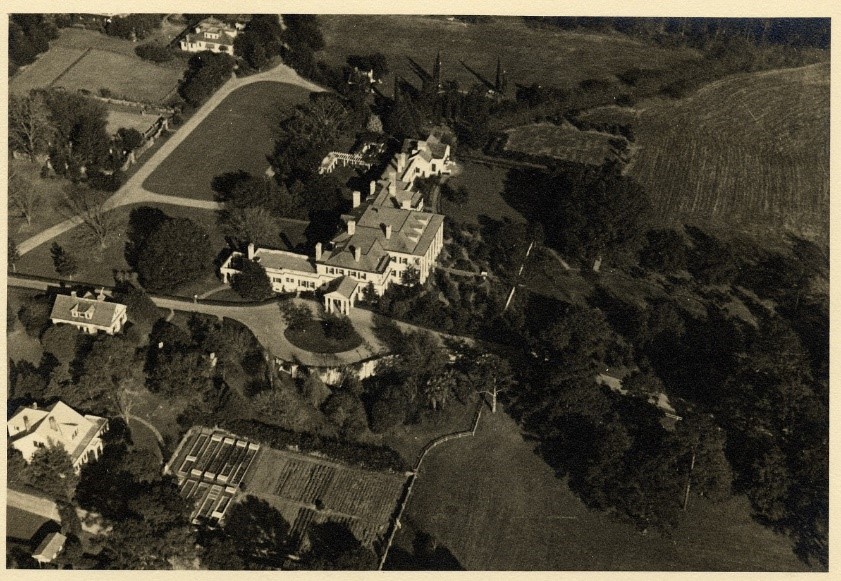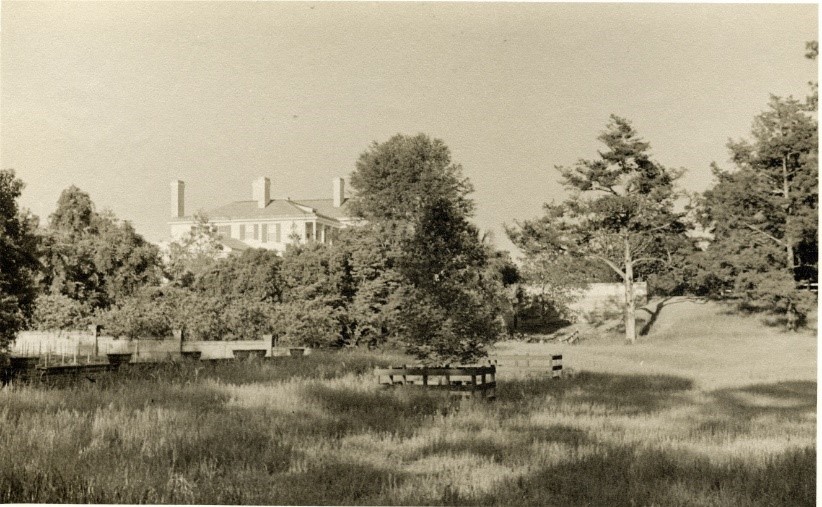Stop #10
Kitchen Garden
From the early 1900s to the 1970s, fruits and vegetables were grown in the Kitchen Garden for use on the property. Today, a variety of seasonal flowers are planted here to provide important habitats for pollinators and a beautiful backdrop for photographs.
 Native plant
Native plant
Chaste Tree
Vitex agnus – castus
Also known as vitex, this deciduous multi-stemmed shrub or small tree can grow 10 to 15 feet with sage-scented leaves. Chaste trees produce showy, fragrant spikes of lavender flowers that bloom in summer and attract many pollinators.
Confederate Jasmine
Trachelospermum jasminoides
This evergreen vine features white, star-shaped blooms that fragrantly fill the air in late spring and summer attracting a variety of pollinators. Jasmine is also known for its sticky milk-like sap which stains most surfaces.
Kitchen Garden in 1936
Aerial view of the Kitchen Garden in 1936
View of Sunrise Field and Kitchen Garden in 1936
Milkweed
Asclepias sp.
There are many varieties of perennial native milkweed planted in the pollinator garden. Monarch caterpillars feed exclusively on the leaves of milkweed, the only host plant for the monarch butterfly species. The milkweed plant provides all the nourishment the monarch butterfly needs to transform from the caterpillar into the adult butterfly. Adult monarchs feed on the nectar of many flowers, but they breed only where milkweeds are found. Why milkweed? Protective chemistry - the toxins eaten by monarch caterpillars protect them as caterpillars and as adults from would-be predators.
Pollinator Garden
Toward the bottom of the Kitchen Garden is the pollinator garden, a resource for the Pebble Hill Plantation Learning Center to educate school groups and visitors on the importance of providing garden habitats for pollinators and wildlife. The pollinator garden is registered on the Rosalynn Carter Butterfly Trail as a source of host plants, nectar, and shelter for butterflies.
Seasonal Assorted Flowers
Raised beds of colorful, seasonal flowers are showcased here.
During the winter months, snapdragons are planted in the beds. They profusely bloom in late March through May, depending upon the weather. In summer, varieties like zinnias, lantanas, periwinkles, and angelonias, also known as summer snapdragons, are planted in the raised beds. Assorted perennials, roses, fruit trees, and annuals grow along the wall.
This stop is made possible through the generous support of Thomasville Garden Club, Inc. in honor of Briarcliff Garden Club.



